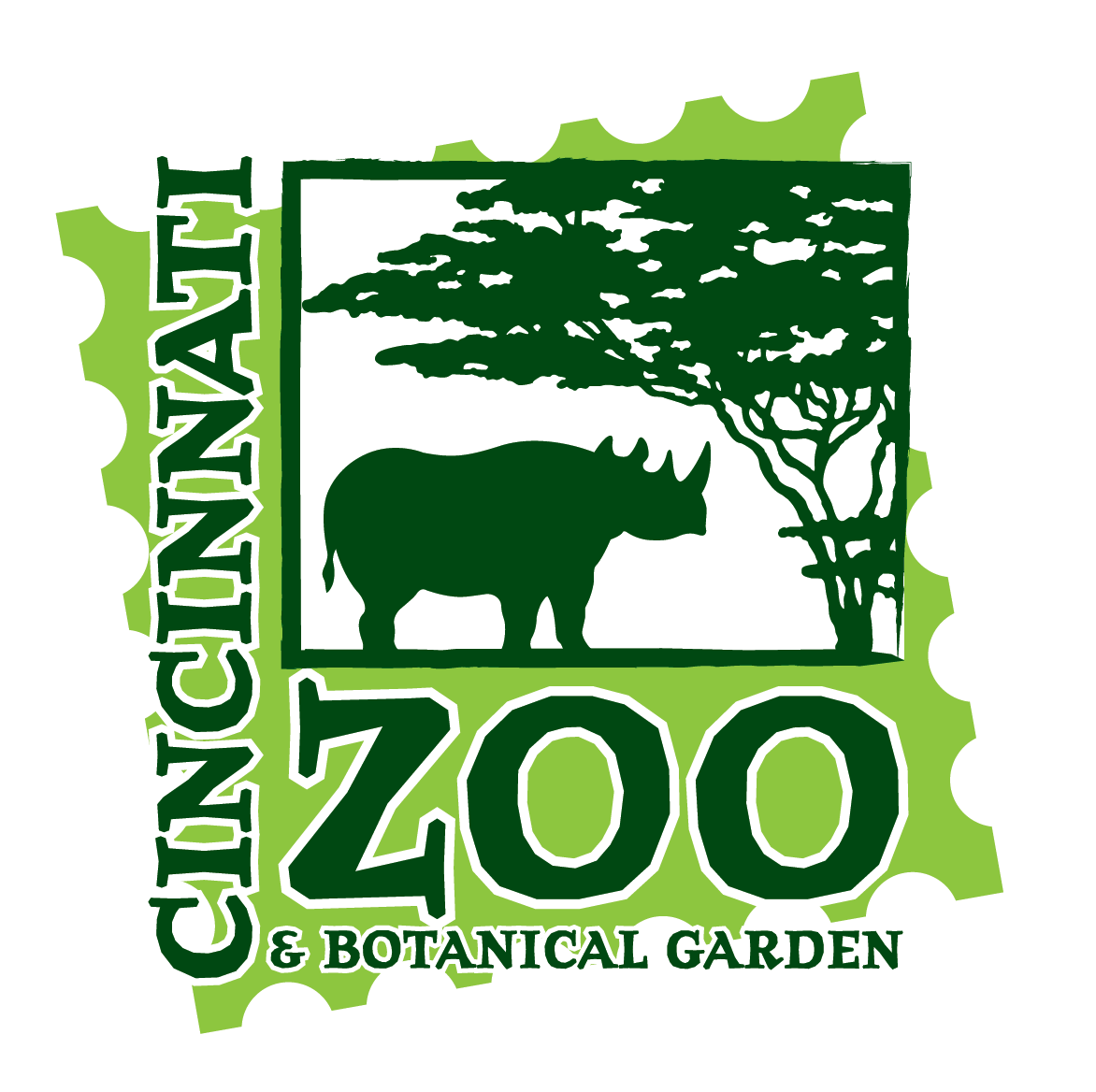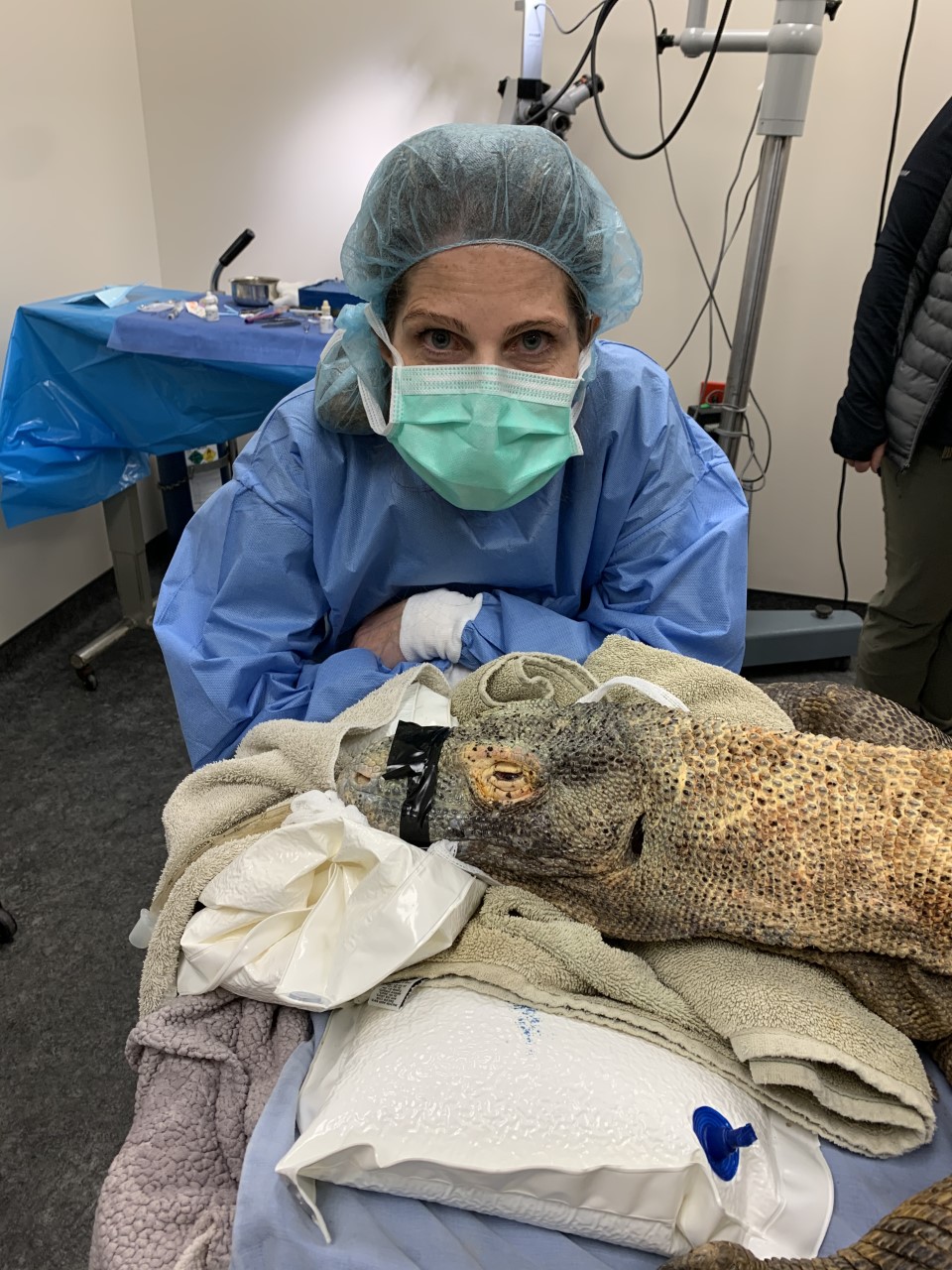Komodo Dragon Gets Double Cataract Surgery
 Grandson of world-famous Naga gets second chance to see!
Grandson of world-famous Naga gets second chance to see!
This Thanksgiving, Cincinnati Zoo & Botanical Garden is thankful that its beloved Komodo dragon Hudo’s sight has been restored! On November 19, a five-person team composed of animal and veterinary care staff escorted Hudo to MedVet Cincinnati to undergo double cataract surgery.
“We noticed cloudiness in his left eye and less than two weeks later his right eye also became cloudy,” said Cincinnati Zoo reptile keeper Ryan Dumas. “He stopped reacting to movement, and his behavior changed dramatically. It was evident that he could not see.”
Hudo knows his habitat well enough to get around without sight, but Komodo dragons are highly visual animals and the Zoo’s veterinary and reptile teams agreed that being blind would have a severe impact on his quality of life. When Dr. Vanessa Kuonen Cavens, an ophthalmologist from MedVet, confirmed that the cloudy obstructions in Hudo’s eyes were cataracts and that corrective surgery was possible, it was clear that the risk of the procedure was worth the desired outcome.
 “I love restoring and preserving the gift of sight for all my patients and was excited to partner with the Cincinnati Zoo to share my expertise and passion,” said Dr. Kuonen Cavens. “Hudo is the most unique animal on whom I’ve performed cataract surgery. We had a great team from the Cincinnati Zoo consisting of zookeepers, Dr. Greg Levens and his veterinary team, as well as our anesthesia team of Ashley Wiese, DVM, MS, DACVAA and Abby Blubaugh. Because of our collaboration, Hudo can see again!”
“I love restoring and preserving the gift of sight for all my patients and was excited to partner with the Cincinnati Zoo to share my expertise and passion,” said Dr. Kuonen Cavens. “Hudo is the most unique animal on whom I’ve performed cataract surgery. We had a great team from the Cincinnati Zoo consisting of zookeepers, Dr. Greg Levens and his veterinary team, as well as our anesthesia team of Ashley Wiese, DVM, MS, DACVAA and Abby Blubaugh. Because of our collaboration, Hudo can see again!”
Hudo remains groggy from the anesthetic, which is normal for reptiles, but seems to have more energy each day. He is eating, resting, and taking support medications. He may be back in the Dragons! habitat as early as next week.
THE LEGEND OF NAGA (Hudo’s grandfather)
A pair of Komodo dragons named Wanita and Naga was given to former President George H. W. Bush in 1990 as a gift from President Suharto of Indonesia. In Indonesia, the Komodo dragon is considered a national treasure, which made this an astonishing gift. President Bush gave the pair to Cincinnati Zoo because of its success in mating many other endangered and rare species.
Naga, the male, became an instant hit. He was the largest Komodo dragon in in the western hemisphere. At one point, he weighed approximately 260 pounds and reached a length of over nine feet. In 2007, Naga passed away due to old age. He was the most successful reproductive male Komodo dragon in Zoo history, siring up to 55 hatchlings! Due to his fruitfulness, his spirit and offspring, including 17-year-old Hudo, live on at Zoos across the country.
SAVING DRAGONS
The Komodo dragon is categorized as a threatened species on the International Union for Conservation of Nature’s (IUCN) Red List. Dutch colonial government instituted protection for these special animals as early as 1915, but it wasn’t until 1980 that The Komodo National Park was founded. Even in protected areas, natural disasters like volcanic activity and wildfires still threaten to destroy critical habitat. Cincinnati Zoo participates in the Komodo Dragon Species Survival Plan, a cooperative breeding program managed by the Association of Zoos and Aquariums.

